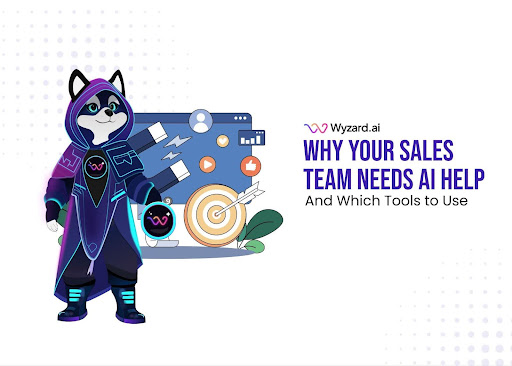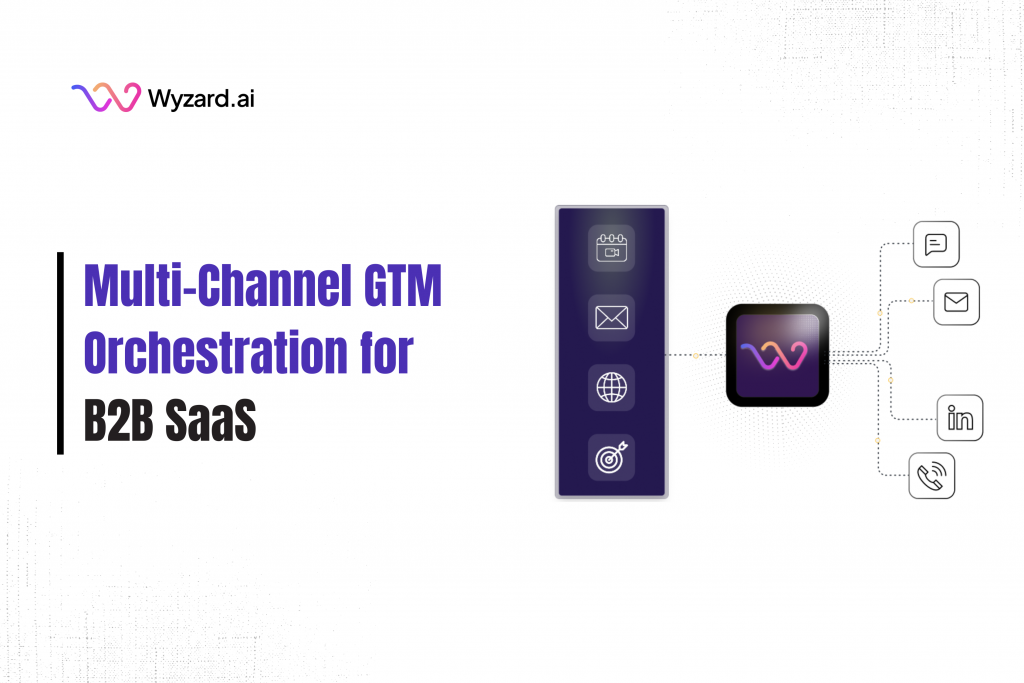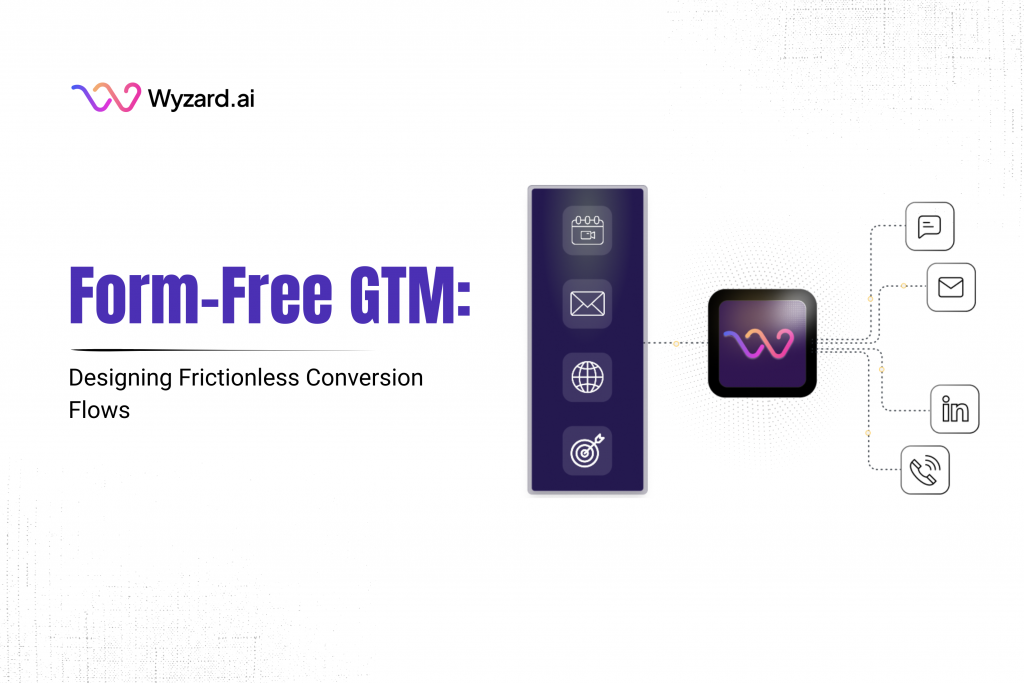If you run marketing or revenue for a B2B SaaS company, the goal is clear: turn GTM spend into ...

Subscribe Now
Your sales team just spent three hours chasing down a lead who showed interest two days ago. By the time they connected, the prospect had already chosen a competitor. Sound familiar? This scenario plays out across B2B SaaS companies every day, not because teams aren’t working hard enough, but because buyer signals get scattered across dozens of tools and channels. By the time someone pieces together the full picture, the moment has passed.
The gap between signal and action is where revenue disappears. Modern buyers move fast; they research, compare, and decide within windows that manual processes simply can’t match. Your CRM holds some data, your marketing automation platform has other pieces, and your sales engagement tools capture different interactions. Meanwhile, the actual moment when a buyer shows intent? That’s often lost in the noise, buried in notification backlogs, or waiting for someone to manually check multiple dashboards.
This is exactly what AI sales tools are built to solve, but not in the way most people think. The goal isn’t to replace your team with robots or automate everything into oblivion. It’s about capturing those critical buying signals the instant they happen and orchestrating immediate, relevant responses across your entire go-to-market stack.
Why Do Sales Teams Need AI Sales Tools Right Now?
Your GTM teams are drowning in signals they can’t act on fast enough. Someone downloads a whitepaper at 11 PM. A prospect spends six minutes on your pricing page during lunch. A decision-maker from a target account engages with three pieces of content in two days. Each of these moments represents genuine buying interest, but by the time your team sees them, processes them, and takes action, that interest has cooled.
The fundamental challenge isn’t a lack of information. Most sales teams have more data than they know what to do with. The problem is connecting the dots between all those signals and taking action while intent is still hot. When a prospect shows interest, they expect a response that feels timely and relevant to exactly what they were looking at. Manual processes can’t deliver that, no matter how talented or dedicated your team is.
AI tools for sales bridge this gap by monitoring signals continuously across every channel and tool in your stack. More importantly, they can trigger appropriate actions instantly, whether that’s sending a perfectly timed email, notifying the right rep, or updating records across systems. This isn’t about working faster; it’s about working at the speed buyers now expect.
What Problems Do Best AI Sales Tools Actually Solve?
The most critical problem facing B2B SaaS sales teams is signal scatter. Your buyer intent data lives in isolated pockets: website behavior in your analytics platform, email engagement in your marketing automation tool, product interest signals in your CRM, and social engagement somewhere else entirely. By the time someone manually pulls this together into a coherent picture, the prospect has moved on. Understanding how intent data drives qualified leads becomes crucial when you realize every delay in recognition means lost revenue.
Response time kills more deals than most teams realize. Research shows that responding to a lead within five minutes versus thirty minutes can make a dramatic difference in qualification rates. But calculating “five minutes” from when? From when they filled out a form? That’s just one signal. What about when they visited your pricing page three times in one day, or when they started actively comparing you to competitors? Those signals rarely trigger immediate alerts in most sales stacks, leaving money on the table.
Manual lead qualification creates another bottleneck. Your team spends hours researching accounts, checking fit criteria, and determining who’s actually worth pursuing. During that time, hot leads cool off and competitors move in. Sales enablement tools that use AI can qualify leads based on behavioral signals and firmographic data instantly, routing them appropriately without human intervention in the research phase.
Personalization at scale remains impossible without AI. Every prospect expects communication that speaks directly to their specific situation, their industry, their role, their challenges, and the exact content they’ve engaged with. Creating this level of customization for every interaction manually would require an army of researchers and writers. Sales AI tools can generate contextually relevant outreach based on real-time signals while maintaining your brand voice and messaging strategy.
How the Best AI Tools for Sales Actually Work Together
| Tool Category | Primary Function | When You Need It |
| Signal Intelligence | Captures and connects buyer intent across all channels | You’re missing opportunities because signals are scattered |
| Conversation AI | Engages prospects instantly through chat and email | Response time is causing lead leakage |
| Sales Enablement | Delivers the right content to reps at the right moment | Reps struggle to find or create relevant materials |
| Revenue Orchestration | Connects tools and triggers actions across your stack | Your team manually moves data between systems |
Most sales teams make the mistake of thinking they need to replace their entire stack with AI sales tools. That’s not how this works. The best approach involves finding AI tools for sales that connect your existing platforms and orchestrate actions across them, rather than trying to do everything in one place.
Think about your current setup. You probably have a CRM you’ve invested heavily in, marketing automation you rely on, sales engagement tools your team knows well, and analytics platforms tracking everything. Ripping all of that out isn’t practical or smart. What you need is something that sits on top of these tools, captures signals from all of them, and triggers appropriate actions through them.
AI lead nurturing versus manual approaches highlights exactly why orchestration matters more than replacement. Your team doesn’t need another tool to learn; they need their existing tools to work together intelligently. When someone shows buying intent, that signal should flow instantly to every relevant system, triggering coordinated responses without manual intervention.
This is where Wyzard, a Signal-to-Revenue AI approach, becomes crucial. Instead of being another isolated platform, it acts as the orchestration layer that connects your tools, captures signals in real-time, and ensures immediate action. When a prospect visits your pricing page, downloads content, and engages on LinkedIn within a short window, Wyzard.ai recognizes that pattern as high intent and orchestrates personalized responses through your existing email platform, updates your CRM, and notifies the right rep, all automatically.
What Makes an AI Sales Assistant Actually Useful?
The term “AI sales assistant” gets thrown around constantly, but most tools labeled this way just automate basic tasks like email scheduling or template insertion. A genuinely useful sales AI assistant does something fundamentally different: it acts as your team’s intelligence layer, processing signals your humans would never catch and triggering responses they would never deliver fast enough.
Speed matters more than perfection. When a buying signal appears, taking action in minutes beats taking perfect action in hours. An effective AI sales assistant monitors continuously, never sleeps, never gets distracted, and never lets a signal slip through the cracks. It doesn’t need to be perfect at writing emails or qualifying leads; it needs to be present at every buying moment and fast enough to respond while interest is hot.
Context beats generic automation. Anyone can set up an autoresponder. What separates sales enablement tools that actually drive revenue from those that just create noise is contextual intelligence. Did this prospect just spend time comparing your features to a competitor? Your response should acknowledge that research. Did they download your ROI calculator after reading about pricing? Your outreach should connect those dots. Generic “thanks for your interest” emails don’t cut it anymore.
Understanding what intent data actually means in B2B helps clarify why context matters so much. A form fill and a pricing page visit might seem similar, but they signal completely different states of buying readiness. AI tools for sales that recognize these distinctions and adjust their actions accordingly will always outperform those that treat every signal the same way.
Wyzard.ai’s Agentic Email and Agentic InMail capabilities demonstrate this contextual intelligence in action. Rather than sending pre-written templates, these features craft messages based on exactly where each prospect is in their journey, what content they’ve engaged with, and what signals they’ve shown recently. The result feels personalized because it genuinely is, AI has processed dozens of data points to determine the most relevant message for this specific moment.
Choosing Sales AI Tools That Actually Integrate With Your Stack
Integration capabilities separate the useful best AI sales tools from expensive shelfware. Before evaluating any platform, map out your current stack and identify where signals are getting lost. Which tools hold buyer intent data? Where do gaps exist in your handoffs between marketing and sales? What manual processes slow down your response time?
The sales AI tools you choose should connect seamlessly with platforms you already use. If you run HubSpot, Salesforce, Marketo, or similar systems, your AI solution needs native integrations that don’t require constant maintenance. Wyzard.ai’s integrations span across major CRM, marketing automation, and sales engagement platforms, ensuring signals flow freely without creating new data silos.
Look for orchestration, not duplication. Many AI sales tools try to replace your CRM or marketing automation platform. That’s backwards. You need something that makes your existing tools smarter by connecting them and coordinating their actions. When Wyzard, the Signal-to-Revenue AI, captures a high-intent signal, it doesn’t try to become your CRM; it updates your existing CRM instantly, enriches the record with context, and triggers appropriate workflows through tools your team already knows.
Signal capture determines everything. The best AI tools for sales are only as good as the signals they can recognize. Look for platforms that monitor website behavior, email engagement, content downloads, social interactions, product usage (if applicable), and third-party intent data. More importantly, they should connect these signals into coherent patterns rather than treating each one in isolation.
The difference between scattered tools and true revenue orchestration comes down to whether your AI platform can recognize complex buying patterns and coordinate responses across channels. When someone shows intent through multiple touchpoints, that’s not three separate opportunities for outreach; it’s one high-priority buying signal that demands immediate, coordinated action.
Moving From Signals to Revenue With Conversational AI for Sales
Conversational AI for sales has evolved beyond basic chatbots that frustrate prospects with canned responses. Modern implementations use natural language understanding to engage genuinely, qualify intelligently, and hand off seamlessly when human expertise becomes necessary. The key is knowing when to automate and when to involve your team.
AI lead nurturing systems that actually enhance sales show how this balance works in practice. AI handles the immediate response, initial qualification, and early-stage nurturing that would otherwise create bottlenecks. Your team gets involved when prospects are genuinely qualified and ready for human interaction, not when they’re still in research mode or asking basic questions.
Wyzard.ai’s Agentic Chat demonstrates this approach perfectly. When a prospect lands on your site showing buying signals, the AI engages immediately with relevant questions based on their behavior. It doesn’t follow rigid scripts; it adapts its conversation based on responses, prior signals, and context. Most importantly, it knows when it’s gathered enough information to route to a human or when continued automated nurturing makes more sense.
The orchestration advantage becomes clearest in follow-up. After an AI conversation, what happens next? In most tools, the data sits in one place, maybe triggering a basic notification. With proper orchestration, that conversation immediately updates your CRM, triggers personalized email sequences, notifies the appropriate rep with full context, and continues monitoring for additional signals, all without manual steps.
This is the fundamental shift from viewing AI tools for sales as standalone solutions to recognizing them as orchestration layers. You’re not buying a chatbot or an email tool or a lead scoring system. You’re implementing intelligence that makes your entire stack work together at the speed buyers now expect.
Taking Action: Implementing AI Sales Tools That Drive Results
The gap between evaluating sales AI tools and actually implementing them successfully often comes down to change management and realistic expectations. Your team won’t adopt new technology overnight, especially if it feels like just another platform to learn. The best AI tools for sales reduce complexity rather than adding to it.
Start with the biggest bottleneck in your current process. Is it response time? Lead qualification? Personalization at scale? Signal recognition? Different best AI sales tools excel at different challenges. Trying to fix everything at once leads to half-implemented solutions that deliver no real value. Pick the area where delayed action costs you the most revenue and focus there first.
Integration should simplify, not complicate. If implementing AI sales tools requires your team to change their entire workflow or learn completely new systems, adoption will fail. Look for solutions that work through interfaces your team already uses. If they live in Salesforce, the AI should surface insights and trigger actions right there, not in yet another dashboard they need to remember to check.
Revenue orchestration platforms like Wyzard.ai succeed in implementation because they don’t ask your team to abandon familiar tools. Reps continue working in their CRM, marketers keep using their automation platform, and leadership still gets reports from their analytics stack. The AI works behind the scenes, connecting these systems and ensuring signals become action instantly. Explore how Wyzard.ai turns signals into revenue through seamless orchestration rather than platform replacement.
Your Next Step in Signal-to-Revenue Transformation
Your sales team needs AI help, not because they’re incapable, but because buyer expectations have fundamentally shifted. Prospects move at speeds that manual processes can’t match. They expect personalized, timely responses based on their specific interests and behaviors. They won’t wait while your team manually pieces together their journey from scattered signals across disconnected tools.
Wyzard, the Signal-to-Revenue AI, approaches this challenge as your Signal-to-Revenue AI, orchestrating actions across your existing tools rather than forcing you to rebuild your entire stack. Every buying moment becomes a revenue opportunity when signals flow freely, responses happen instantly, and your team gets the context they need exactly when they need it. That’s not future thinking, it’s how B2B SaaS companies are winning today.
FAQs
Q: What makes AI sales tools different from regular sales automation software?
Traditional automation follows rigid rules you set manually. AI sales tools recognize patterns across multiple signals, adapt to context, and orchestrate immediate responses across your entire tech stack without needing constant rule updates or manual triggers.
Q: How does Wyzard.ai work with tools we already use like Salesforce or HubSpot?
Wyzard.ai connects your existing CRM, marketing automation, and sales platforms as an orchestration layer. It captures signals from all these tools, triggers coordinated actions through them, and updates records automatically, you don’t replace anything, just make it all work together intelligently.
Q: Can AI sales tools really respond fast enough to make a difference in deal outcomes?
Speed gaps of even 10-15 minutes dramatically reduce conversion rates when buyers show intent. AI tools for sales monitor continuously and respond in seconds, not hours, ensuring you engage prospects while their interest is still hot and before competitors move in.
Q: When should a B2B SaaS company start implementing sales AI tools?
When you’re losing deals because signals scatter across tools, response times lag behind buyer expectations, or your team spends more time on admin work than actual selling. If manual processes create bottlenecks in lead qualification or follow-up, AI sales tools become essential for pipeline efficiency.
Q: What’s the difference between an AI sales assistant and conversational AI for sales?
An AI sales assistant helps your team by processing signals, updating systems, and triggering workflows behind the scenes. Conversational AI for sales engages directly with prospects through chat or email, qualifying them intelligently before routing to your team with full context.
Other blogs
The latest industry news, interviews, technologies, and resources.
Form-Free GTM: Designing Frictionless Conversion Flows
A visitor lands on your pricing page. They are ready to talk, not to wrestle with a 12-field form. ...

December 8, 2025
Outcome-Led Paid Campaigns: Beyond Clicks and CPL
You put serious money into paid media. Dashboards show strong CTR and healthy CPL. The next slide hits and ...

 We’ve secured funding to power Signal-to-Revenue AI to GTM teams globally. →
We’ve secured funding to power Signal-to-Revenue AI to GTM teams globally. →


